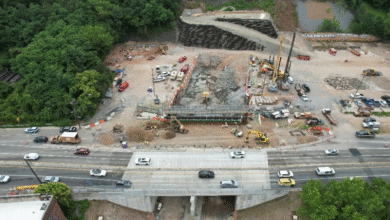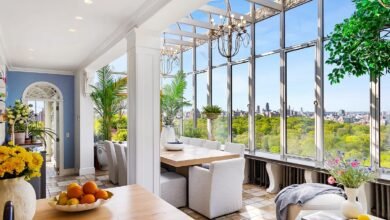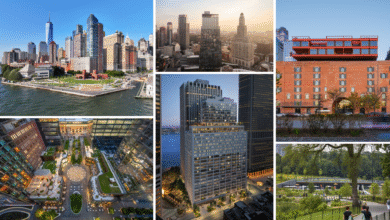New Downtown Brooklyn ‘asphalt art’ shares timeless wisdom
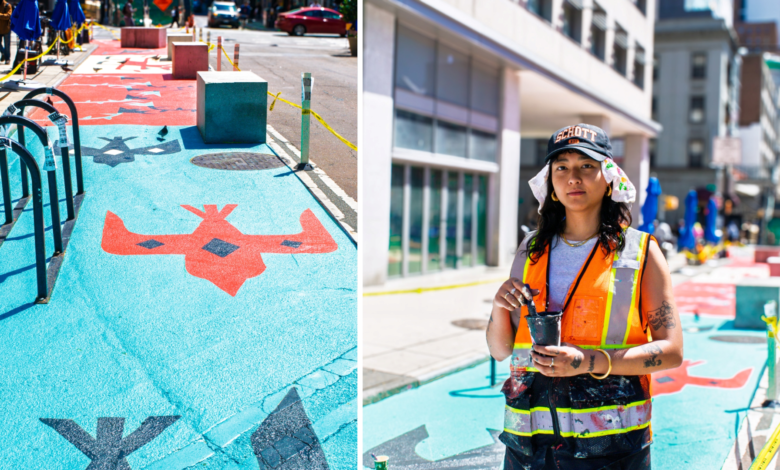

Images courtesy of Argenis Taveras for DBP
Downtown Brooklyn just got brighter and safer, thanks to a colorful new public art installation. In the ground murals titled “Fear No Frontier,” New York City-based artist Isolina Minjeong channels her Korean and Peruvian heritage with a bold design depicting powerful creatures, like tigers and dragons, a tribute to the resilience of New Yorkers. The vibrant piece measures roughly 10,700 square feet across the Department of Transportation’s (DOT) Shared Streets and the area surrounding the Jay Street busway. Ahead, learn more about the murals and hear from Minejeong, who said she wanted the artwork to feel like “quiet blessings.”
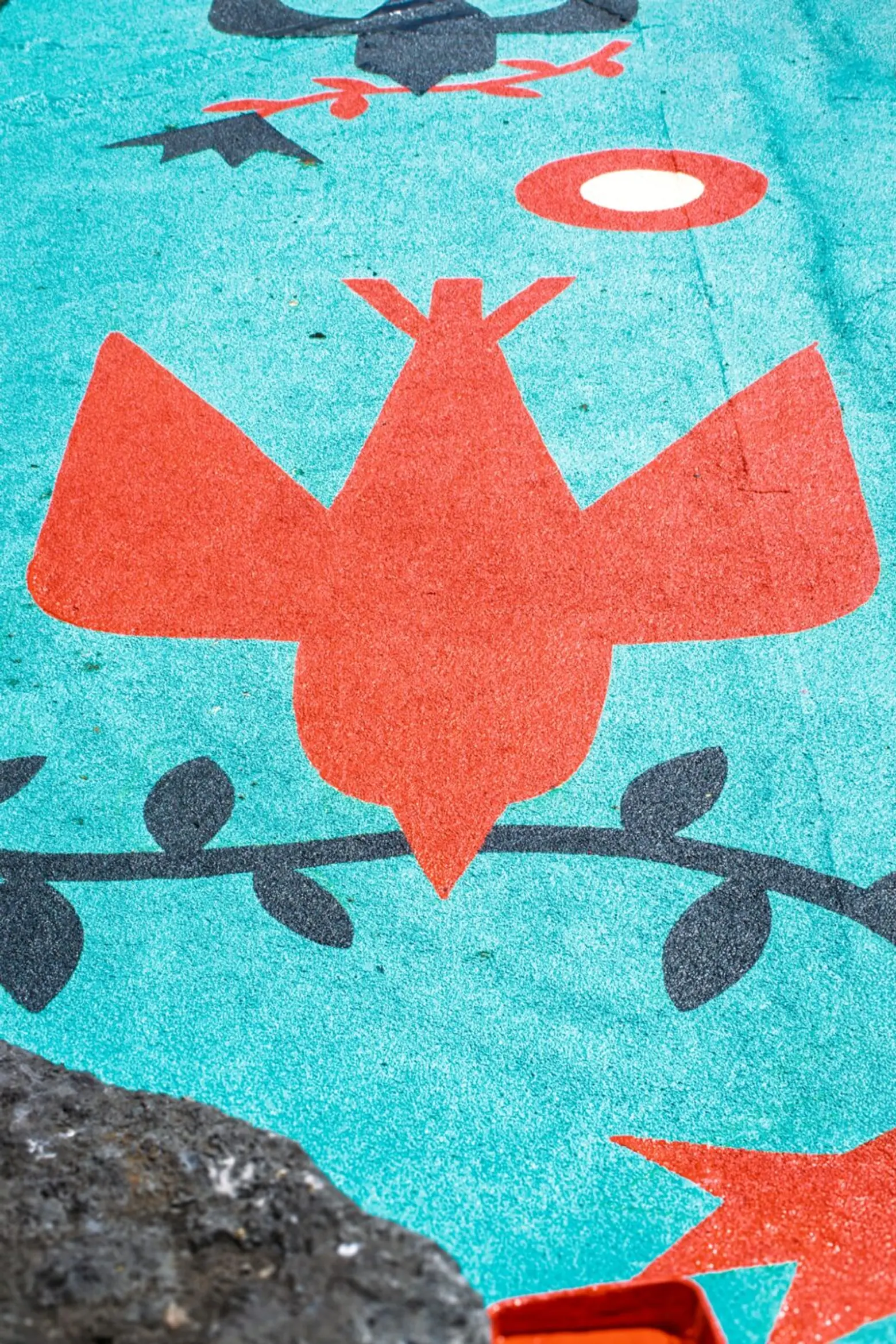
The artwork complements the neighborhood’s pedestrian spaces, which have planters, granite blocks, bike corrals, and street furniture, visually ties together core streets, and enhances safety by clearly marking pedestrian-priority zones.
“Fear No Frontier” is grounded in myth and folklore, depicting powerful animals representing fortune, such as tigers, dragons, and wolves, each representing the determined spirit that defines New York City and its inhabitants.
The murals weave together guardians of luck, text, symbols of home, and floral offerings into gestures of hope and persistence. Just as flowers push through pavement cracks and homes rise in the unlikeliest places, New Yorkers continue to carve out spaces of belonging, care, and renewal. The installation serves as a tribute to that resilience, reminding viewers that luck is not just found but achieved through determination and community.
To learn more about the mural and her creative vision, 6sqft spoke with artist Isolina Minjeong for personal insights into “Fear No Frontier.”
6sqft: How did you think about the pedestrian experience when designing the mural?
Minjeong: When designing this mural, I wanted to create a sense of movement and invitation—something that unfolds as you walk by. I thought a lot about scale and pacing, how a person might feel passing it on their commute or while taking a slow stroll. I wanted the imagery to feel both immediate and layered—bold enough to catch your eye, but rich enough to reward a second look. Pedestrians are always in transition, so I designed the mural to mirror that—full of momentum, symbolism, and moments of quiet pause.
You’ve spoken about the power of language, symbols, and storytelling in your work. What meaning were you hoping to convey through “Fear No Frontier”?
“Fear No Frontier” is about transformation through resilience. I wanted to create a narrative that honored the strength of crossing boundaries—literal, emotional, generational. The symbols are drawn from myth, memory, and heritage, and woven together to form a story about claiming space and evolving without fear. It’s also a tribute to the invisible labor and cultural richness that immigrant communities bring to this city. There’s tenderness in it, too—reminding us that strength can look like softness, like persistence, like hope.
“Fear No Frontier” draws from both your Korean and Peruvian roots. How did your heritage shape the symbols and stories you chose to depict in this mural?
My heritage is a map I’m always returning to and redrawing. For this mural, I drew from both Korean and Peruvian mythologies—places where oral tradition, animal symbolism, and ancestral strength live side by side. The tiger, for example, is a protector in Korean folklore, while the Peruvian motifs carry echoes of sacred geometry and earth-based storytelling. Merging these elements allowed me to create a personal yet universal myth—one that speaks to being from many places at once, and learning to stand in all of them with pride.
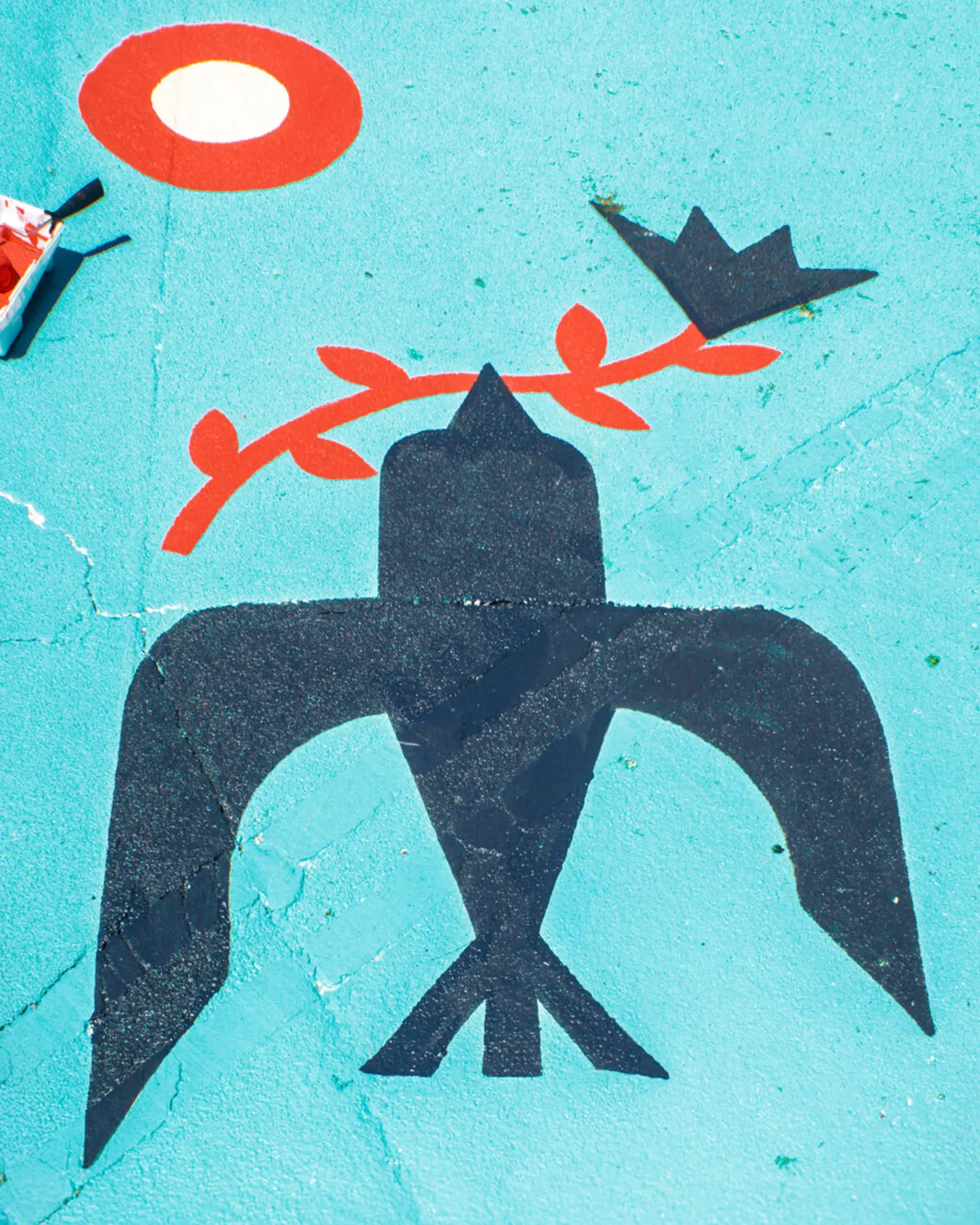
What was your creative process like for a piece of this scale?
This piece demanded both structure and surrender. I started with research—looking into traditional patterns, creature myths, and symbols that felt resonant. Then came sketching, composing, and reworking the flow to feel natural at a large scale. But once I was on the wall, everything changed—I had to trust my body and instincts. There’s a rhythm to working large; it’s physical and immersive. It became a dance between precision and improvisation, where the environment, weather, and even passersby shaped the final piece.
Can you share how mythological imagery—like dragons, tigers, and wolves—reflects the spirit of New York City and its people?
New York is a place of living myths—of people constantly reinventing themselves, navigating chaos, and creating beauty from the mess. Dragons, tigers, and wolves are protectors, shapeshifters, and symbols of wild resilience. To me, they represent the untamable energy of the city—its courage, its contradictions, its fight. These creatures aren’t just decorative; they carry stories of survival, power, and transformation. I see that same spirit in the people of New York every day.
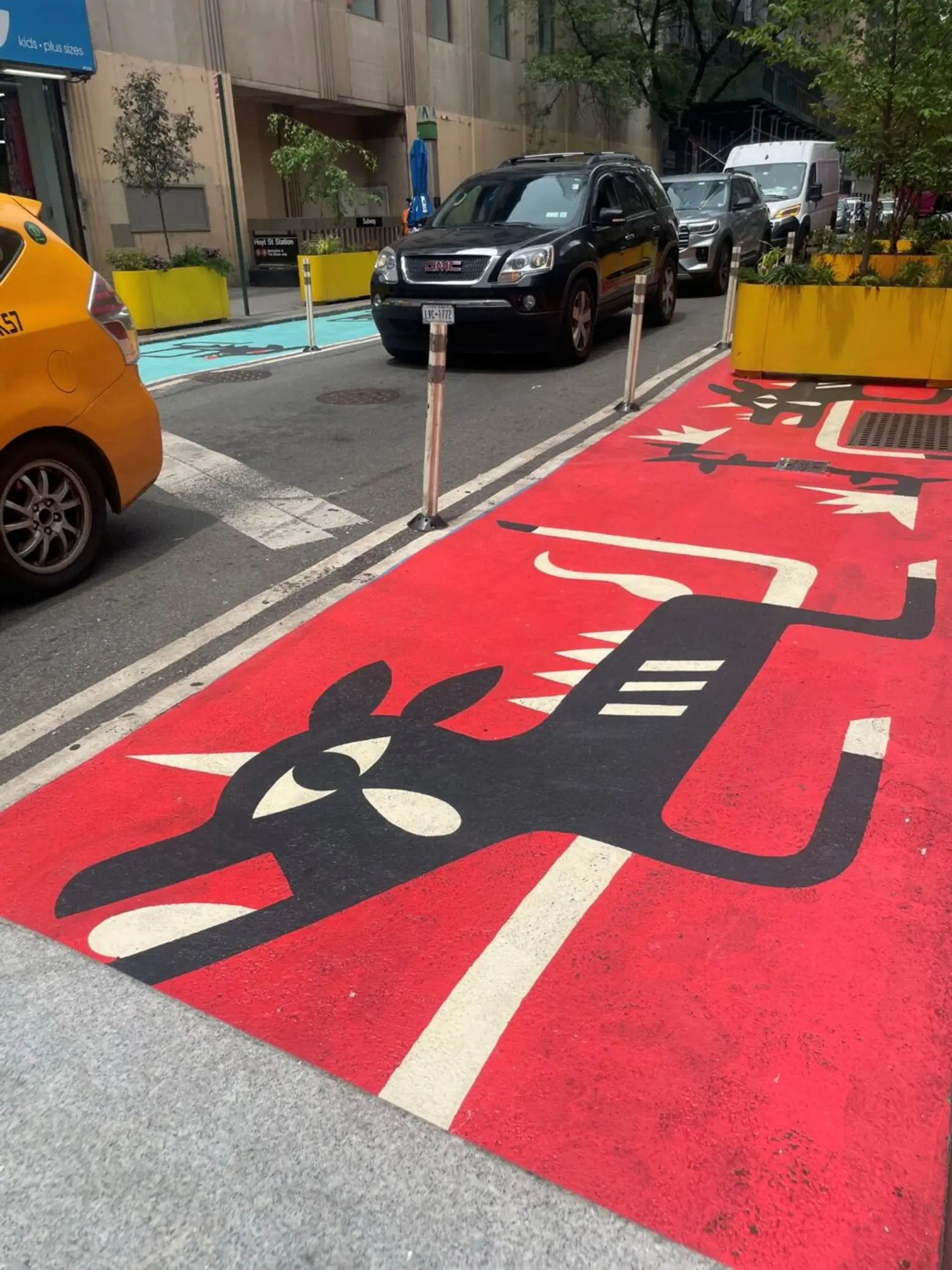
Presented by the Downtown Brooklyn Partnership (DBP) in collaboration with the DOT, the mural, known as “asphalt art,” livens up the pedestrian spaces throughout the neighborhood’s Shared Street network.
“Every year, the new asphalt art serves as a reminder that Downtown Brooklyn is a true people first neighborhood,” Regina Myer, president of DBP, said.
“Isolina’s vibrant new artwork welcomes pedestrians to this dynamic neighborhood that is always evolving. We are grateful for our partners at NYC DOT for working with us to improve our streets and look forward to the streets being transformed into inspiring works of art for everyone to enjoy.”
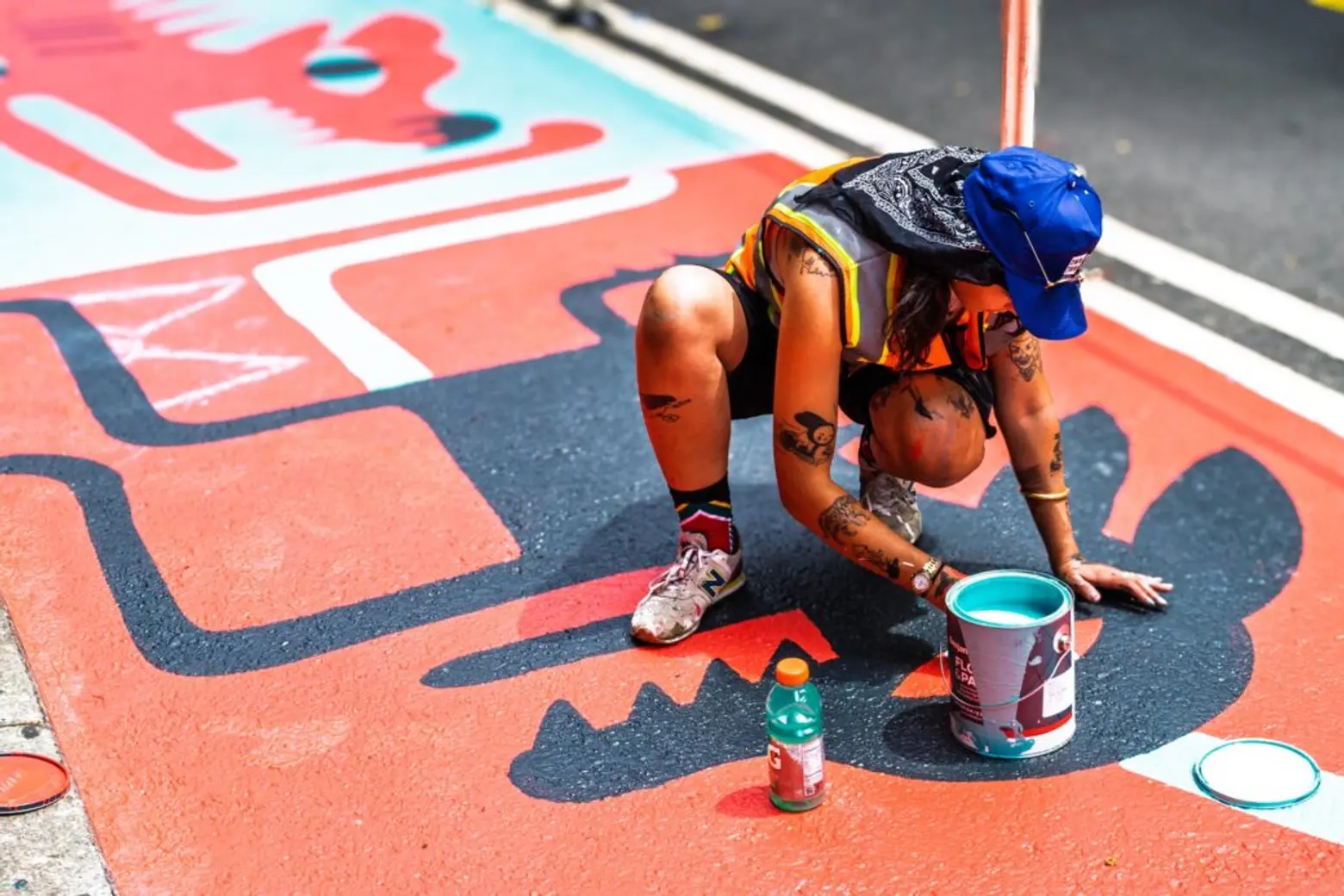
Shared Streets—also known as “pedestrian-priority” streets—are designed to reduce travel speeds and prioritize pedestrians and cyclists, treating motorists as guests. Vehicle access is still permitted for loading, deliveries, parking, and other essential services, but slow speeds are enforced through traffic calming measures, signage, street markings, and public space amenities.
DOT’s Shared Street program is a cornerstone of the DBP’s Public Realm Action Plan, which aims to reclaim streets for people and beautify the neighborhood’s streetscape. Developed in collaboration with design firms Bjarke Ingels Group and WXY architecture + urban design, the plan lays out transformative changes to shift Downtown Brooklyn from a vehicle-oriented business district into a vibrant, pedestrian-focused hub.
The program was first launched in Downtown Brooklyn on Pearl and Willoughby Streets in 2019, and is being expanded across blocks in the core of the neighborhood.
RELATED:

